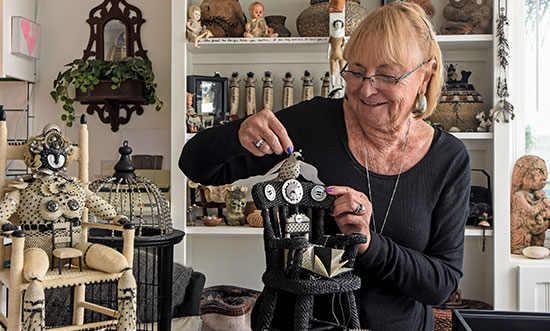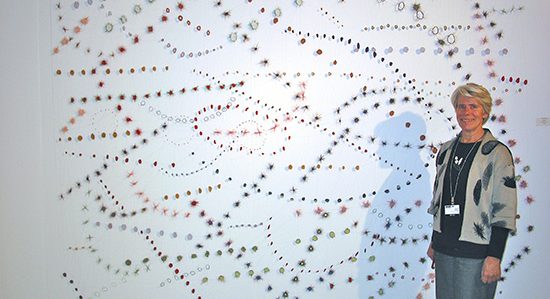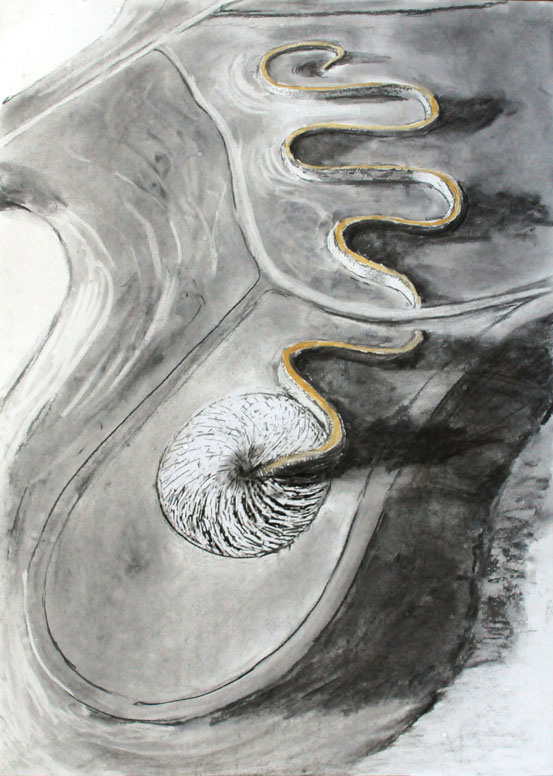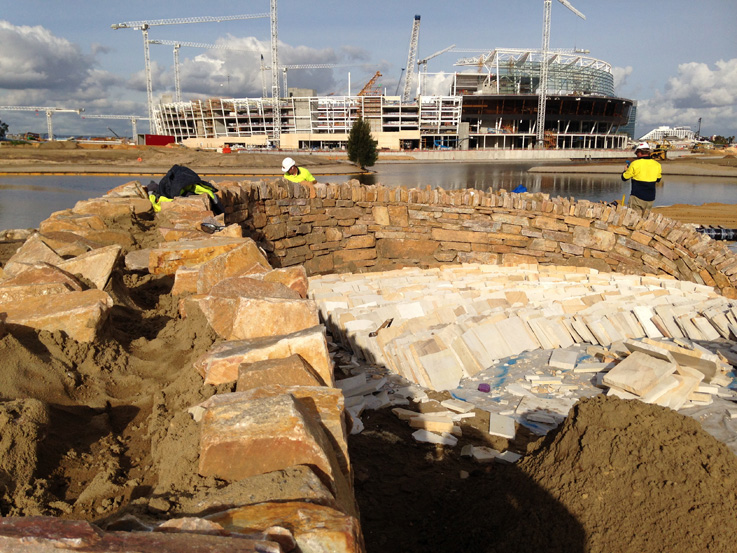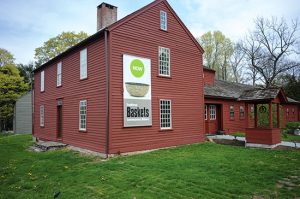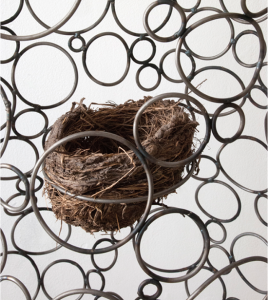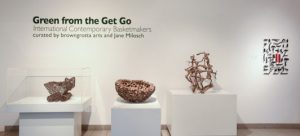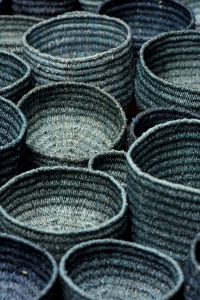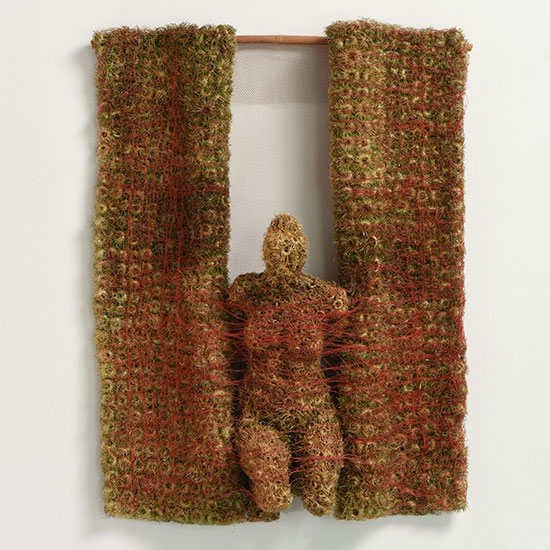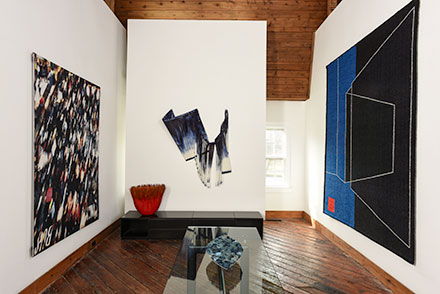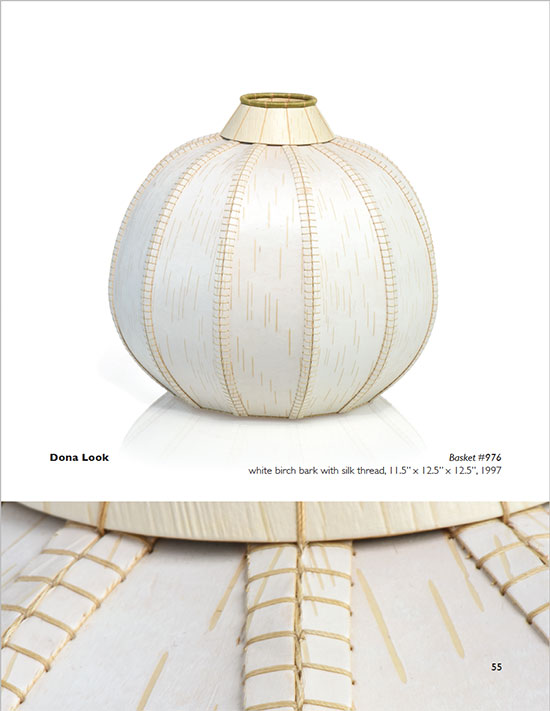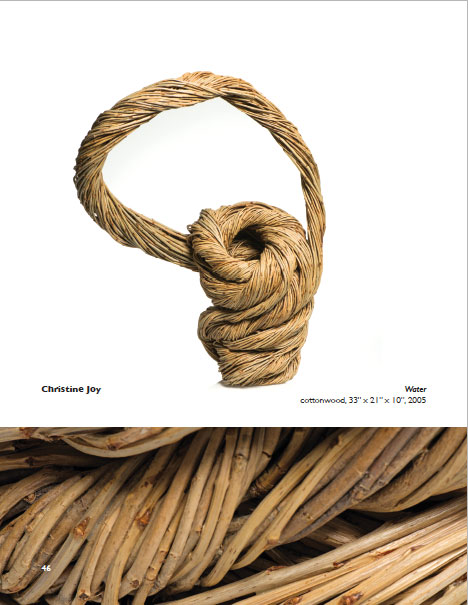Three sculptures and a assemblage of paper made up the offerings for New The Week at browngrotta arts in March.
Karyl Sisson’s Looped, is a sinuous sculpture made of vintage zippers and tape. Sisson is preoccupied with useful objects from the past — sewing notions, women’s vanity items, paper drinking straws. In her art, they are given a post-functional future as forms and structures that suggest living organisms, indigenous architecture or ceramic vessels. Like Sisson,
for Interlacing Blue, Keiji Nio also used fiber tape, in his case nylon tape, to create a more formal geometric forms.
Randy Walker incorporates found objects into his work, re-envisoning them and giving them a new life as art, as here in Collider. In Emerging,
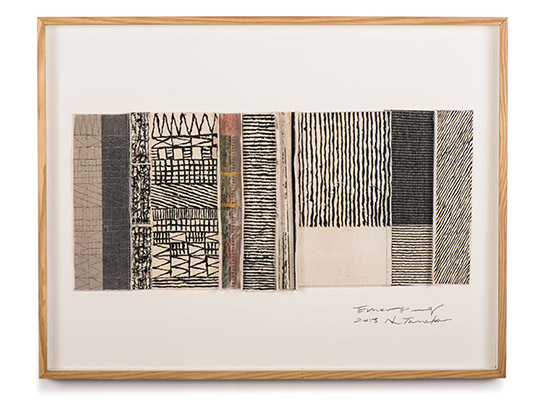
27ht Emerging, Hideho Tanaka, japanese carbon ink drawing, inkjet print, collage (cotton cloth which put a japanese tissue paper.), 17.125″ x 22.25″, 2013 Photo by Tom Grotta
Hideho Tanaka’s interest in creative forms peculiar to fiber materials, which emerge in time and space and yet which also metamorphose and disappear, is evident. In this work, he as combined Japanese carbon ink drawing, inkjet print, cotton cloth and Japanese tissue paper. All four of these artists will be among those featured in Still Crazy After All These Years…30 years in art, which opens at browngrotta arts on April 22nd. For a complete artist’s list visit http://www.browngrotta.com/Pages/calendar.php.
















